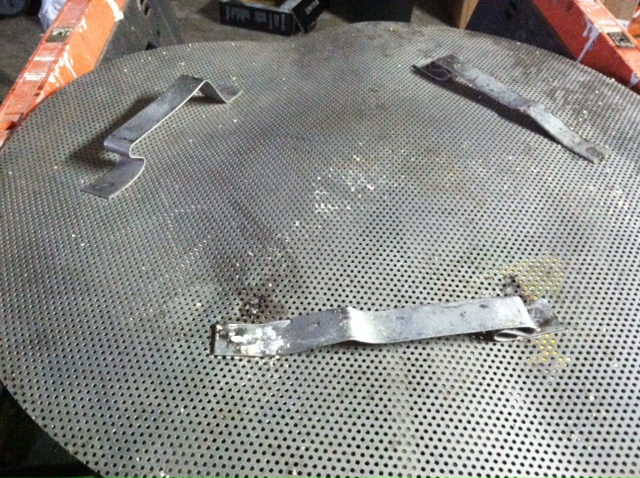Hi all,
So today I fired up my new 82l system, planning to start gentle with a 69l batch of porter (3 times my usual quantity).
All went beautifully, hit mash temp etc etc, until the end of the mash, when I started recirculation (plan being to recirculate just for 5 mins or so to help clarify the wort). Anyway, basically no wort came out. Gave the whole thing a stir, even though I'd just added some water to bring up the temp for mash out, and still nothing.
In desperation, I poured out the whole mash into buckets and poured as much as it would take into my old, tried and tested, cooler mash tun. Still no joy. Vigorous stirring allowed a little wort to flow, but I mean, really a little.
In the end I used a sieve - even then it took a lot of shaking to get the wort out - and didn't even sparge, figured I'd just make less beer and cut my losses.
So - diagnosis! I would obviously blame my new DIY mash tun false bottom (pizza tray with holes, dip tube through the middle) except that the grain didn't work in my old mash tun either, and when I examined the false bottom assembly afterwards, there was no sign of blockage.
So could it be the grain? I'd just ordered new grain, and it's possible it came milled a little finer than usual. However, 10 of the 15kg of grain was from the end of an old sack, which had presented no sparge issues before. Would 5kg of too finely ground grain in a 20kg grain bill cause such a stuck sparge?
Really keen to get some opinions on this!
Iz
So today I fired up my new 82l system, planning to start gentle with a 69l batch of porter (3 times my usual quantity).
All went beautifully, hit mash temp etc etc, until the end of the mash, when I started recirculation (plan being to recirculate just for 5 mins or so to help clarify the wort). Anyway, basically no wort came out. Gave the whole thing a stir, even though I'd just added some water to bring up the temp for mash out, and still nothing.
In desperation, I poured out the whole mash into buckets and poured as much as it would take into my old, tried and tested, cooler mash tun. Still no joy. Vigorous stirring allowed a little wort to flow, but I mean, really a little.
In the end I used a sieve - even then it took a lot of shaking to get the wort out - and didn't even sparge, figured I'd just make less beer and cut my losses.
So - diagnosis! I would obviously blame my new DIY mash tun false bottom (pizza tray with holes, dip tube through the middle) except that the grain didn't work in my old mash tun either, and when I examined the false bottom assembly afterwards, there was no sign of blockage.
So could it be the grain? I'd just ordered new grain, and it's possible it came milled a little finer than usual. However, 10 of the 15kg of grain was from the end of an old sack, which had presented no sparge issues before. Would 5kg of too finely ground grain in a 20kg grain bill cause such a stuck sparge?
Really keen to get some opinions on this!
Iz



